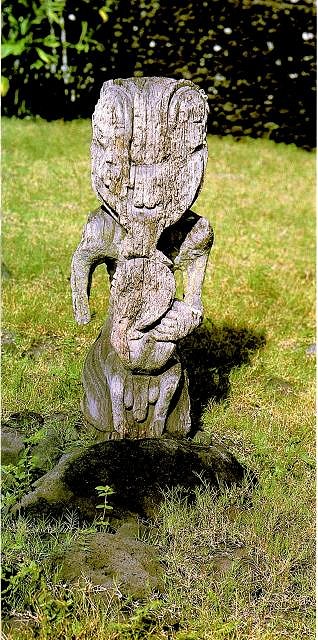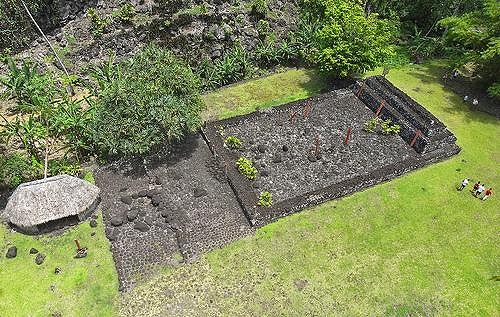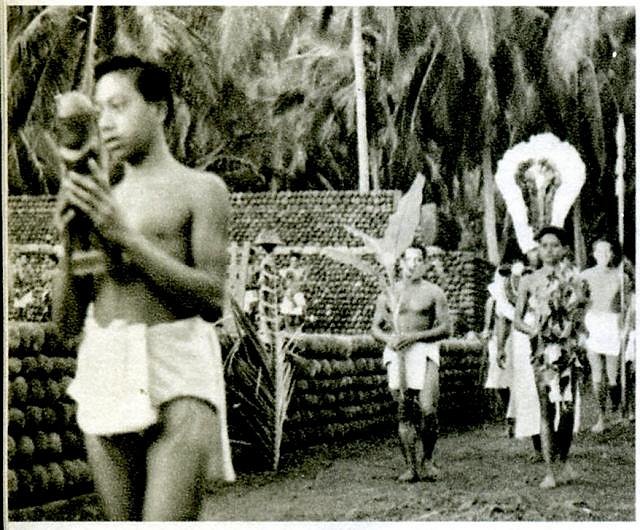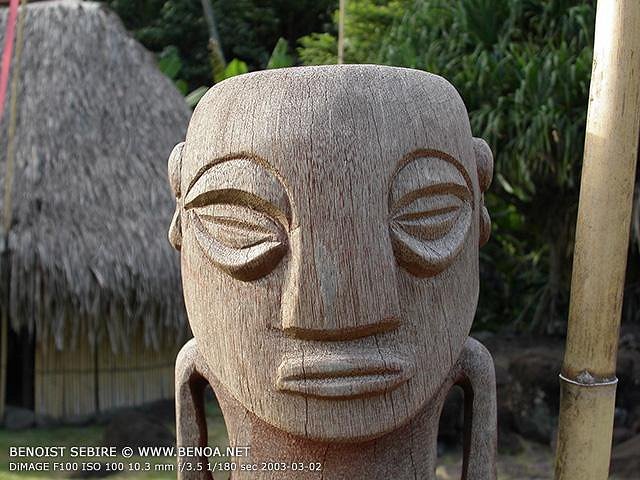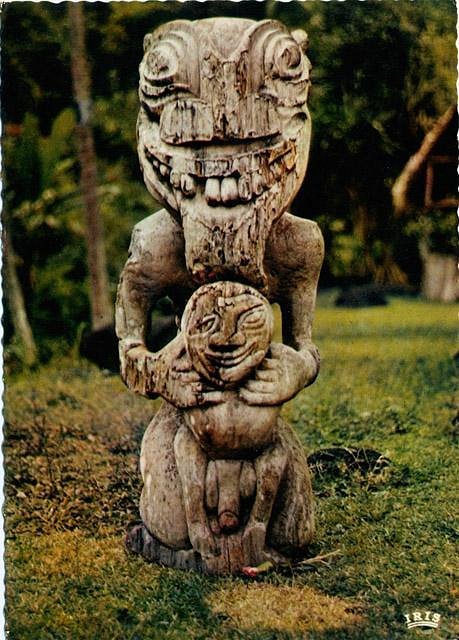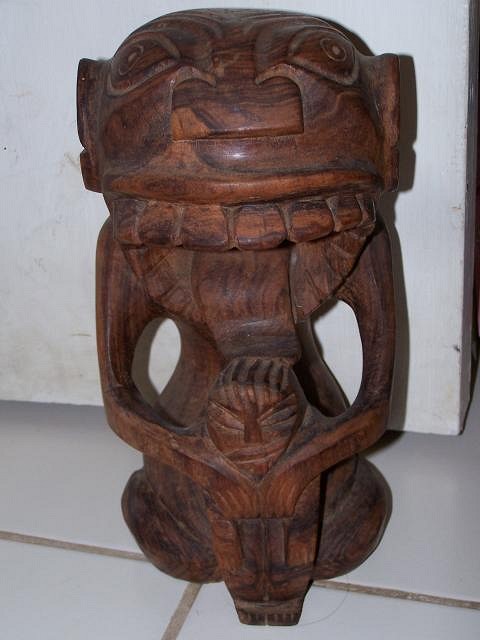Tiki Central / Collecting Tiki / A Collection of Cannibals
Post #504735 by bigbrotiki on Fri, Jan 15, 2010 10:01 PM
|
B
bigbrotiki
Posted
posted
on
Fri, Jan 15, 2010 10:01 PM
This one's for Kate. This is a great find, Sabu! I have pondered over this image for many years, not because of its unusually realistic endowed-ness, but because it is a Cannibal carving in situ in a Tahitian marae!...at least that is what the caption to THIS photo...
... in Miroslav Stingl's 1985 book "Kunst der Suedsee" says. It was photographed (obviously a bit later than the postcard) at the Arahu Rahu marae in Tahiti, which was reconstructed in the mid-50s:
Since then, Tahitian processions and festivals have taken place at this marae every year:
But nowadays it is said to be a mostly tourist oriented performance place. The Tikis from the first renovation have since been replaced by spanking new ones:
..which in their design are actually closer to ancient Tahitian (and not Marquesan) carvings. Nevertheless, if this marae's original reconstruction in the mid-century was done under the auspices of archeologists, would they have allowed tourist carvings on such an authentic site? The date of 1923 on Kate's Cannibal trio places the Cannibal design concept very close to a generation of Tiki carvers that still might have had carving tradition knowledge handed down to them from pre-contact generations. Could it be possible that this carving ONLY survived in its tourist form, in the minds of old carvers, from before contact, because all its ancient examples had been destroyed? One can imagine that a "perverse" carving such as this would have been on top of the list of any missionaries determined to eradicate pagan imagery! The one at Arahu Rahu is certainly a modern version : ..actually quite close to the one that Spence Weaver owned: ..but the Don the Beachcomber trio looks more blocky and primitive. Now anthropologists might argue that the linear thinking of the A-B-C sequence of Catcher-Eater-Full Belly is much more a Western way of thinking, but what about the Palau story boards? Why wouldn't Polynesians have done narrative sequences in carvings, then, to? And yes, ancestor carvings were mostly symbolic and sacred, but the Polynesians also did have an irreverent sense of humor. And last, perhaps just the Eater Cannibal existed as an ancient godhead, and the rest of the set was completed in tourist times by an inspired carver? At this point, I doubt that the carver of that Tahitian marae cannibal is still alive, and unless a pre-contact Cannibal carving is discovered in some burial cave, my "missing link" theory will remain just that. But I like theories. :) [ Edited by: bigbrotiki 2010-01-15 22:03 ] |

